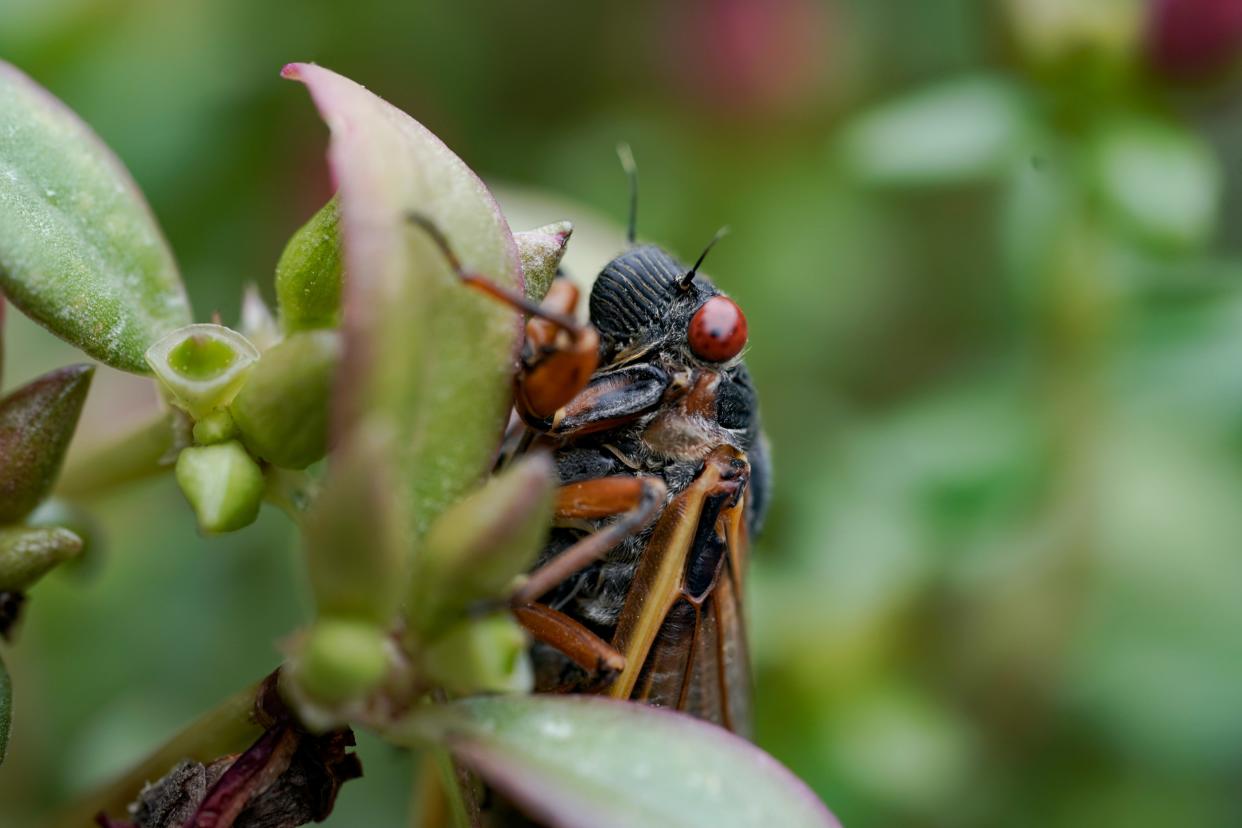Cicadas will soon become a massive, dead and stinky mess. There's a silver lining.
This spring will see billions of periodical cicadas emerge in lawns and gardens across a broad swath of the United States. They will crunch under tires, clog gutters and create a massive, stinking mess after they die and slowly dry out.
But in all that mountain of rotting bug parts is a silver lining: Experts say dead cicadas are a fantastic compost and mulch, contributing nitrogen and other nutrients to the soil.
“This is an exciting and beneficial phenomenon,” said Tamra Reall, a horticulture and etymology specialist with the University of Missouri Extension.
After spending 13 or 17 years underground as nymphs, taking tiny amounts of nutrients from the roots of trees, the cicadas live for just four to six weeks above ground. They spend them frantically emerging, mating and fertilizing or laying eggs, and then they die – returning the nutrients they consumed during their long underground years back to the soil.
What are all those noisy bugs? Cicadas explained for kids with printable coloring activity
“The trees feed the cicadas when they’re nymphs, and then when the cicadas break down they give back nutrients to nourish the next generation. It’s a really beautiful system,” said Floyd Shockley, co-lead of the entomology department at the Smithsonian National Museum of Natural History.
Cicadas decompose rapidly, within just a few weeks, Reall said.

“Within a few months all that’s going to be left is a few wings and maybe some exoskeletons clinging to trees,” she said.
What should you do with all the dead bugs? Compost them.
For those faced with piles of dead cicadas during that period, one of the best ways to dispose of them is by throwing them in the compost heap.
That can be a fancy compost bin or simply a pile of yard waste at the end of the garden.
If you can, it’s nice to have a mix of wetter, more nitrogen- or protein-rich material and drier, more carbon-rich material. In this case, the bugs are the wetter, nitrogen- and protein-rich material – what composters calls the “greens.”
“To do a more traditional compost you’d want to balance your greens and your browns, and the cicadas would be the greens, your nitrogen, so you’d want to add leaves or something to balance,” Reall said.
You also can just make a heap of the dead cicadas and wait for them to turn into dirt. It will go fast but they might smell, cautions Reall.
“They’ll all rot in the end,” she said.
And once the bodies have rotted away, “you have the chitinous material, and that’s good mulch.”
How cicadas help the soil
It’s not just nutrients that cicadas add to the soil. As they tunnel up from their underground burrows, they aerate the ground.
Can cicadas bite? How to prepare when 'trillions' are expected to descend this summer
“Their tunneling creates pathways, and these are ways for air and water to get into soil, so additional nutrients are able to the roots of plants,” Real said. They also improve water filtration, so when it rains the water can get deeper into the ground and closer to plants’ roots.
Cicadas don’t hurt most garden plants
Though cicadas will eat new growth on trees and plants, and especially young bushes and trees, in general they’re not a threat to most garden plantings.
That’s partly because the trimming they give the plants can be beneficial.
“After they’re all gone, you’ll start to see the tips of tree branches, it looks like they’re dying, but it’s actually a natural kind of pruning for these mature trees, so there can be additional growth the season afterward. So in following years, you can have more flowering or even more fruit,” Reall said.
This article originally appeared on USA TODAY: What happens when the cicadas die? Stinky mess makes good compost.
